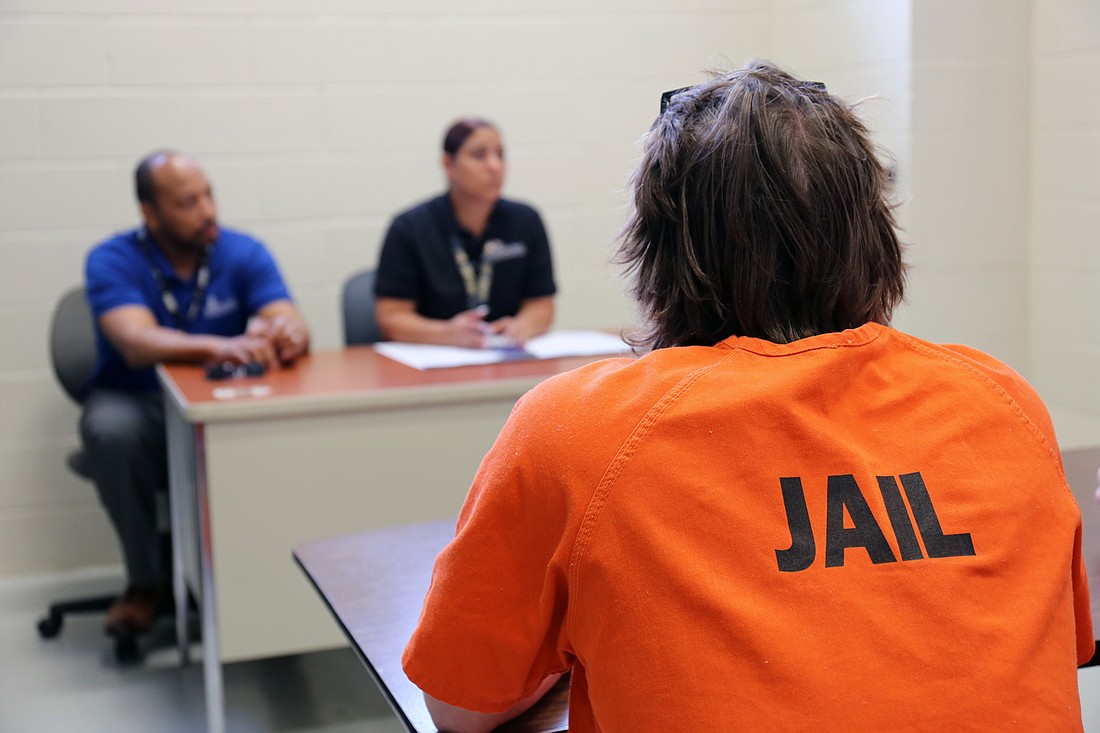- April 25, 2024
-
-
Loading

Loading

Changes are headed toward the Sarasota County Jail as law enforcement officials hope to improve services for inmates and reduce countywide rates of repeat offenders.
On the heels of the introduction of a program designed to help inmates navigate life upon release, the Sarasota County Commission approved three additional initiatives aimed to ultimately alleviate jail overcrowding.
Sarasota County Sheriff Tom Knight said the county jail has been over capacity for more than 10 years, and these programs could help target specific issues contributing to recidivism.
Knight said the county sits at a recidivism rate of about 55%, down from 65% when Knight first started as sheriff 11 years ago. He estimates that could be reduced into the 35% range when the proposed programs are functional.
“We’re seeing a significant reduction in recidivism, especially with that fact that we’re just building out our programs over the 11 years I’ve been sheriff,” Knight said. “We keep adding programs as we show success.”
Since Knight’s start in 2009, the jail has seen the installment of specialized pods that tackle substance abuse or prepare inmates for job interviews and housing upon release. It also provides inmates with state-issued IDs, which Knight says is often one of the biggest challenges former inmates face.
Earlier this month, the department announced the start of a program that will provide former inmates with a mentor, or “navigator,” upon release. The navigators will help provide the former inmates with services including case management, psychiatric services, peer support and access to transportation or housing.
“Some of these things you and I take for granted,” Knight said. “For many of these people that are released from our facilities, it’s like climbing a mountain.”
Now county officials hope to tackle even more issues the jail is facing with three new initiatives: an early case-resolution program, a 40-bed residential treatment and reentry pilot project, and a 200-bed treatment facility to help inmates with substance abuse issues and mental illnesses.
The purpose of these projects, Knight told commissioners, is to focus on issues that often lead to criminal activity, such as substance addictions, anger management and behavioral problems. These facilities would address common problems without the need to build a new jail, which could cost the county millions to operate each year.
Wayne Applebee, the county’s human services manager, said each of the three programs will target low-level offenders who make up approximately one third of the jail’s population.
“If these programs are successful at reducing recidivism, you not only reduce the jail beds from those who you’ve actually relocated to those spaces, but if they don’t come back, then you also have a compounding factor over the years in the future,” he said.
County commissioners unanimously approved of all three programs and stated the programs were well conceived and had community support.
“I think this has been creative with all the folks that worked on it, and of course, there’s the elephant in the room: We did not want to build, right this minute, a $125 million new jail,” Commissioner Al Maio said. “This still keeps everyone absolutely safe and takes care of the people that are troubled in a much better way.”